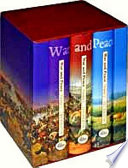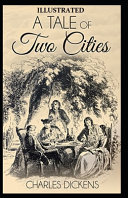Discover the best authors of literary realism books from the 19th and 20th centuries who wrote stories that gave a glimpse into the reality of people.
The 19th and 20th centuries saw British, Irish, Russian, and American authors like James Joyce, George Orwell, and C.S. Lewis push the literary realism movement to new heights. In the turmoil of the last two centuries, war, politics, social upheaval, and economic uncertainty meant that authors had plenty of real-world material to work into their stories.
For more recommendations, you might also enjoy exploring authors like Harlan Coben, authors like Gillian Flynn, best detective novel series.
Table of Contents
Open Table of Contents
- 2. War and Peace by Leo Tolstoy
- 3. The Cask of Amontillado by Edgar Allan Poe
- 4. The Catcher in the Rye by J.D. Salinger
- 5. The Great Gatsby by F Scott Fitzgerald
- 6. Crime and Punishment by Fyodor Dostoevsky
- 7. The Old Man and the Sea by Ernest Hemingway
- 8. The Grapes of Wrath by John Steinbeck
- 9. A Tale of Two Cities by Charles Dickens
- 10. Lord of the Rings by J.R.R. Tolkien
- 11. Adventures of Huckleberry Finn by Mark Twain
- 12. Oliver Twist by Charles Dickens
- 13. Ulysses by James Joyce
2. War and Peace by Leo Tolstoy
Russian author Leo Tolstoy wrote War and Peace which is considered to be one of the essential pieces of 19th-century literary realism.
Published in 1869, War and Peaceby the Russian author Leo Tolstoy is considered to be one of the essential pieces of 19th-century literary realism. The book combines fictional narratives with historical realities surrounding the French invasion of Tsarist Russia in the second decade of the 19th century and solidified Tolstoy as one of the most celebrated authors.
Count Pyotr “Pierre” Kirillovich Bezukhov, an awkward misfit and illegitimate son of a wealthy Russian count, is the story’s main character. Tolstoy often puts his own views and beliefs across through Pierre, and his ability to describe the world through the lead character’s perspective was a hugely innovative approach in 19th-century literature.
From Pierre’s perspective, Tolstoy offers readers a glimpse into the world of upper-class Russian families during a period of history when the country’s survival as a sovereign state was fundamentally in doubt. Other highly recommended books by Leo Tolstoy include Anna Kareninaand*The Death of Ivan Ilyich**.
“Man cannot possess anything as long as he fears death. But to him who does not fear it, everything belongs. If there was no suffering, man would not know his limits, would not know himself.”
Leo Tolstoy
3. The Cask of Amontillado by Edgar Allan Poe
The Cask of Amontilladois one of many extremely successful and equally dark stories by the American short story writer Edgar Allan Poe.
Published in 1846, The Cask of Amontillado is just one of many extremely successful and equally dark stories by the American short story writer Edgar Allan Poe. Poe is undoubtedly one of the most celebrated American writers of the 19th century. He was an essayist and a fiction writer known for his often extremely dark short stories and poems.
His work is regarded as pioneering in the areas of realism, science fiction, and horror, as he often pushed the bounds of what was socially acceptable in the 19th century. The Cask of Amontillado takes place in a small Italian town during a period of festivities.
While the locals are celebrating, the narrator, Montresor, plans to take revenge on a fellow Italian nobleman named Fortunato. The story culminates in a brutal murder, and Poe uses unfettered violence and savagery to explore themes of revenge and forgiveness.
“He did not perceive that my smile now was at the thought of his immolation.”
Edgar Allan Poe
4. The Catcher in the Rye by J.D. Salinger
The Cather in the Rye, written by J.D. Salinger is undoubtedly one of the most controversial books of its time.
Published in 1951, The Cather in the Rye is undoubtedly one of the most controversial books of its time. The novel’s author, J.D Salinger, is to this day considered one of the best American authors of all time, thanks to the book that explored themes of societal alienation and the dangers of superficiality - two themes that are more relevant today than ever before.
The story follows two days in the life of a 16-year-old boy, Holden Caulfield, who has just been expelled from school. Holden’s caught up in a vortex of emotions as his issues at school spill over into more extensive questions about what it means to be an adult and to form romantic relationships.
The story is often read as an extended metaphor for how we lose our childhood innocence and the consequences of this often painful and complex process. After publishing the book, Salinger became one of many famous writers who reacted to fame by becoming a recluse.
“The mark of the immature man is that he wants to die nobly for a cause, while the mark of the mature man is that he wants to live humbly for one.”
J.D. Salinger
5. The Great Gatsby by F Scott Fitzgerald
The Great Gatsbywritten by F. Scott Fitzgerald has become one of the most well-known pieces of American literature.
Published in 1925, The Great Gatsby has become one of the most well-known pieces of American literature, thanks to its Holywood adaptation that features Leonardo Di Caprio. Written by F Scott Fitzgerald, the book gives the reader a glimpse into the life of the upper class during the roaring 20s in New York City.
The story is narrated by Nick Carraway, a recent university graduate who moves to New York with great expectations to build a lucrative career in finance. After moving to an upper-class neighborhood, Nick mixes with New York’s most wealthy families, including Jay Gatsby.
Nick’s life quickly becomes intertwined with Gatby’s and several other wealthy New Yorkers through a series of lavish parties. However, soon it becomes clear that behind the great wealth of his newly found friends are mountains of dark secrets that eventually bubble to the surface and result in tragedy.
“Let us learn to show our friendship for a man when he is alive and not after he is dead.”
F Scott Fitzgerald
6. Crime and Punishment by Fyodor Dostoevsky
Crime and Punishmenttops the rankings for the best books from the Russian author Fyodor Dostoevsky.
Published in 1866, Crime and Punishment generally tops the rankings for the best books from the Russian author Fyodor Dostoevsky. The book tells the story of Rodion Raskolnikov, an impoverished young man who has become utterly destitute in Saint Petersburg since completing his studies.
Rodion formulates a plan to alleviate his financial struggles. The young man decides that he’ll kill and then rob a pawnbroker who stores several valuable objects in her humble home. Dostoevsky highlights questions of basic morality as Rodion battles with justifying his crime. The story forces the reader to question what lengths they would go to if they were facing the brutal realities of poverty.
“You have laid hands on yourself, you destroyed a life … your own (it’s all the same)!”
Fyodor Dostoevsky
7. The Old Man and the Sea by Ernest Hemingway
Ernest Hemingway won the Pulitzer Prize in 1953 by his book The Old Man and the Sea.
Published in 1952, The Old Man and the Sea is widely considered one of Ernest Hemingway’s greatest books, and it won him the Pulitzer Prize in 1953. The 20th-century story revolves around a straightforward yet thought-provoking plot of an old fisherman engaging in an epic physical and mental battle to land a giant Marlin off the coast of Cuba.
Santiago, the old fisherman, takes the reader on a journey that taps into themes of patience, perseverance, and the objective of life as he spends more than 84 days on the water hunting one of the most prized fish in the world. The prose is simple, not flashy, just raw storytelling at its finest, taking the reader on a painful and rewarding journey into Santiago’s simple yet complex world.
“You did not kill the fish only to keep alive and to sell for food, he thought. You killed him for pride and because you are a fisherman. You loved him when he was alive and you loved him after. If you love him, it is not a sin to kill him. Or is it more?”
Ernest Hemingway
8. The Grapes of Wrath by John Steinbeck
The Grapes of Wrathwritten by John Steinbeck is a robust piece of literary realism that follows the painful journey of two economic migrants crossing the US during the Great Depression.
Published in 1939, The Grapes of Wrath is a robust piece of literary realism that follows the painful journey of two economic migrants crossing the US during the Great Depression. John Steinbeck depicts the savage poverty that families suffered during the Depression through the lens of Tom Toad and Jim Casy, who leave their native Oklahoma hoping to find some economic refuge.
The story was initially badly received, with many states actually banning it due to the savage betrayal of economic conditions in the country at the time. However, in 1962 the Nobel Prize committee noted that the Grapes of Wrath was one of the main reasons they awarded Steinbeck the Nobel Prize in literature. Or
“Our people are good people; our people are kind people. Pray God some day kind people won’t all be poor.”
John Steinbeck
9. A Tale of Two Cities by Charles Dickens
A Tale of Two Cities by Charles Dickens taps into themes such as anarchy, political stability, social injustice, and sacrifice.
Published in 1859, A Tale of Two Cities takes place in the lead-up to the French Revolution and follows how this critical junction in European history played out in Paris and London.
Charles Dickens tells the story primarily through the main character, Sydney Carton, a legal aid to a respected barrister in London who has to sacrifice his own life to save his best friends. Sydney’s story plays out amid epic political and social turmoil as the revolution tears apart the old social and economic hierarchies of both Paris and, later, London.
Although the story is fictional, its realism stems from allowing readers to understand the complexity of lower and middle-class life during the revolution. In the process, Dickens taps into themes such as anarchy, political stability, social injustice, and sacrifice.
“A wonderful fact to reflect upon, that every human creature is constituted to be that profound secret and mystery to every other.”
Charles Dickens
10. Lord of the Rings by J.R.R. Tolkien
Lord of the Ringsis a three-part epic written by the legendary J.R.R. Tolkien.
Published between 1954-55, the Lord of the Rings is a three-part epic written by the legendary British author J.R.R. Tolkien. The Lord of the Rings is a household name primarily because of the successful film versions of the story that have captivated audiences worldwide.
The story centers around a mythical land called Middle Earth, where the evil magician Sauraman is at war with several other factions, including the elves, hobbits, and humans. The story follows the journey of one seemingly average hobbit called Frodo as he and his companions embark on a hellish journey to destroy a magic ring that is destined to fall into the wrong hands unless it’s destroyed in the fires of Mordor.
On the face of it, the story can be read as a piece of incredible fantasy fiction, but clever metaphors hide themes such as environmental destruction due to industrialization, religion, and politics. The Lord of the Rings is undoubtedly one of the most successful books of the 20th century and has been translated into over 35 languages.
“Moonlight drowns out all but the brightest stars.”
J.R.R. Tolkien
11. Adventures of Huckleberry Finn by Mark Twain
Adventures of Huckleberry Finnwritten by Mark Twain is considered a pivotal piece of children’s literature.
Published 1884-5, Adventures of Huckleberry Finn is considered a pivotal piece of children’s literature. It set a new standard for how authors approach children’s books. The American author Mark Twain colorfully describes life in the state of Mississippi during a time when racism was deeply entrenched in the Southern states of the United States.
The story centers around a young boy called Huck who runs away from his abusive father and his friend and runaway slave Jim. The journey sees the pair travel down the Mississippi River encountering various strange characters from all walks of life and class. The children act as a contrast to the evils entrenched in the slaveholding society at the time, giving the reader an insight into how absurd the evil deeds of adults often look to innocent children.
“Human beings can be awful cruel to one another.”
Mark Twain
12. Oliver Twist by Charles Dickens
Published in 1838, Oliver Twist is a story of the brutal reality that countless orphans faced growing up in the workhouses during British industrialization. Charles Dickens’ classic is best known for the line ‘Please sir, may I want some more’ uttered by the fearful Oliver as he unsuccessfully asks for another portion of the terrible food served to the orphans in the workhouse.
Oliver escapes the workhouse only to be sucked into the dark underbelly of London after he comes into contact with a petty criminal known as the ‘Artful Dodger’ who brings Oliver into a criminal gang run by a man called Fagin. The story touches on some of the most painful realities of 19th-century Britain, including child labor, poverty, and crime.
There’s no doubt that Oliver Twistis one of the greatest pieces of 19th-century literary realism that deserves a spot on your reading list, especially if you’re interested in the societal effects that industrialization had on major European cities.
“There are books of which the backs and covers are by far the best parts.”
Charles Dickens
13. Ulysses by James Joyce
Ulysses written by James Joyce is considered one of the most influential pieces of modern literature.
Published in 1922, Ulysses is considered one of the most influential pieces of modern literature. Written by the Irish author James Joyce, Ulysses follows two Irish characters, Leopold Bloom and Stephen Dedalus, as they navigate the streets of Dublin, meeting several fascinating characters. Although the story only follows a single day in the characters’ lives, Joyce wrote it based very loosely on the Odyssey, The Legendary Ancient Greek novel by Homer.
Joyce’s approach to writing, known in the form of ‘interior monologue’ that attempts to portray a character stream-of-consciousness, opened up the world of story writing to the randomness of human decision-making allowing Ulysses to unfold into an epic story that uncovers the hidden pathways of thought within the minds of the main characters.
Ulyssesis undoubtedly one of the most important books of the 20th century, and therefore, anyone interested in this period should consider reading it at least once. If you enjoyed our round-up of the best authors for literary realism, we have many more literary articles you can check out. You might want to
“What’s in a name? That is what we ask ourselves in childhood when we write the name that we are told is ours.”
James Joyce




